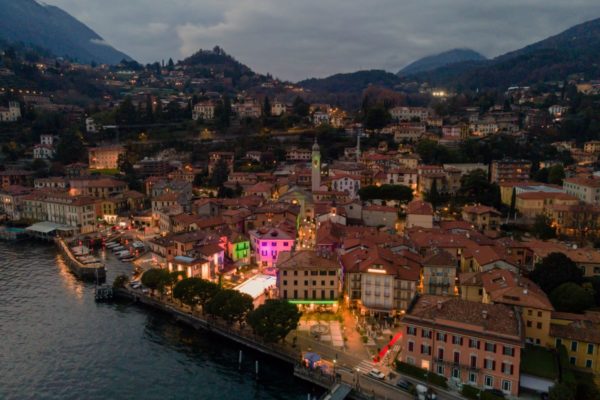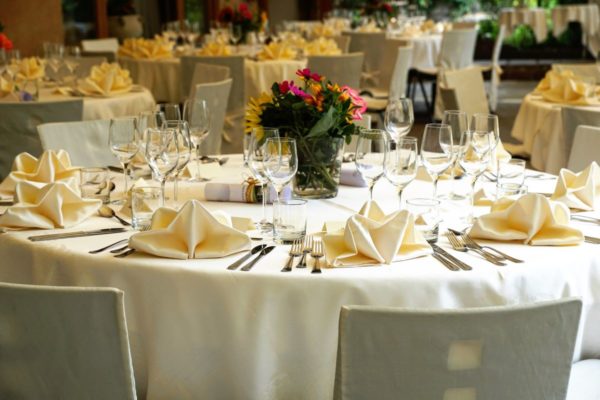Breglia is a small, interesting mountain village situated just 7 kilometers from Menaggio. The road leading up to the village, situated at an altitude of 750 meters, affords wonderful views of Lake Como and the surrounding mountains.
You follow the road from Menaggio towards Lugano. After a few bends you leave the main road and turn right onto the SP7 road towards Loveno and Plesio. You will pass by Loveno, part of the commune of Menaggio and will then encounter a series of villages which are part of the commune of Plesio. The last village is Breglia where you can park the car on the free parking space next to the church of San Gregorio. If you do not have a car bus line C13 connects Menaggio with Breglia.
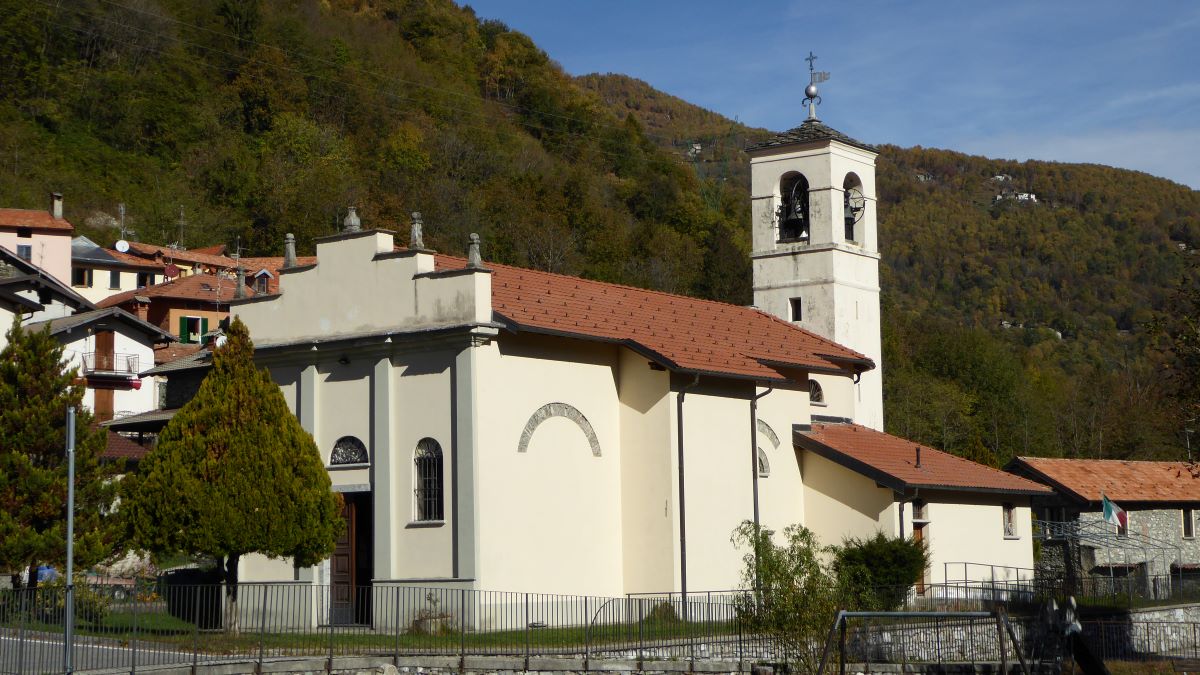
Breglia (Brèa in the local dialect) was an autonomous municipality up to 1928 and became then part of the municipality of Plesio. The name Breglia derives from the Germanic terms “Bra”, “Braida” and the diminutive “Braidicula”: meaning ‘meadow’, ‘flat expanse’. In fact at the end of the climb the ‘saddle’ of Breglia presents itself like a plateau: the area in front of the church is still called “el piàn” (plateau).
Breglia is made up of three hamlets:
The hamlet of Magino (‘Masgin’ in the local dialect) is positioned mostly toward the south of Breglia. Some say the name derives from the month of May. Another plausible hypothesis suggests that Magino is derived from the Latin words “mansio” a place of welcome or hospitality along ancient roads. The French word “maison” has similar roots. In further support of this hypothesis, Magino used to house a hospital (16)
La Villa (la Vila in the local dialect): the word ‘Villa’ usually refers to the most important hamlet of a municipality. As such, Villa di Breglia developed around ancient and important buildings still recognizable in Via del Murello, the upper part of the hamlet, where we find consecutively: Casa Roveda (8) with medieval origin, then the former college that was housed in a Renaissance
building (9), followed by the medieval tower (10) and convent of Dominican friars (11) founded around 1462. The Molo family house (5), on the border with Gèra, was built between the fifteenth and sixteenth centuries, still has a fresco from 1510. Villa was also home to the parish church, the rectory as well (2) as the town hall (up to the early 19th century).
Gèra got its name from the local word “gèra,” which means gravel. This gravel formed a natural divide between Magino and Villa. Here was constructed in the 19th century the “Cà Cumuna”, the town hall, that also housed the nursery and elementary schools until 1954. Just a few meters away, the Lucini family built a large building (14) around 1885.
Map of Breglia
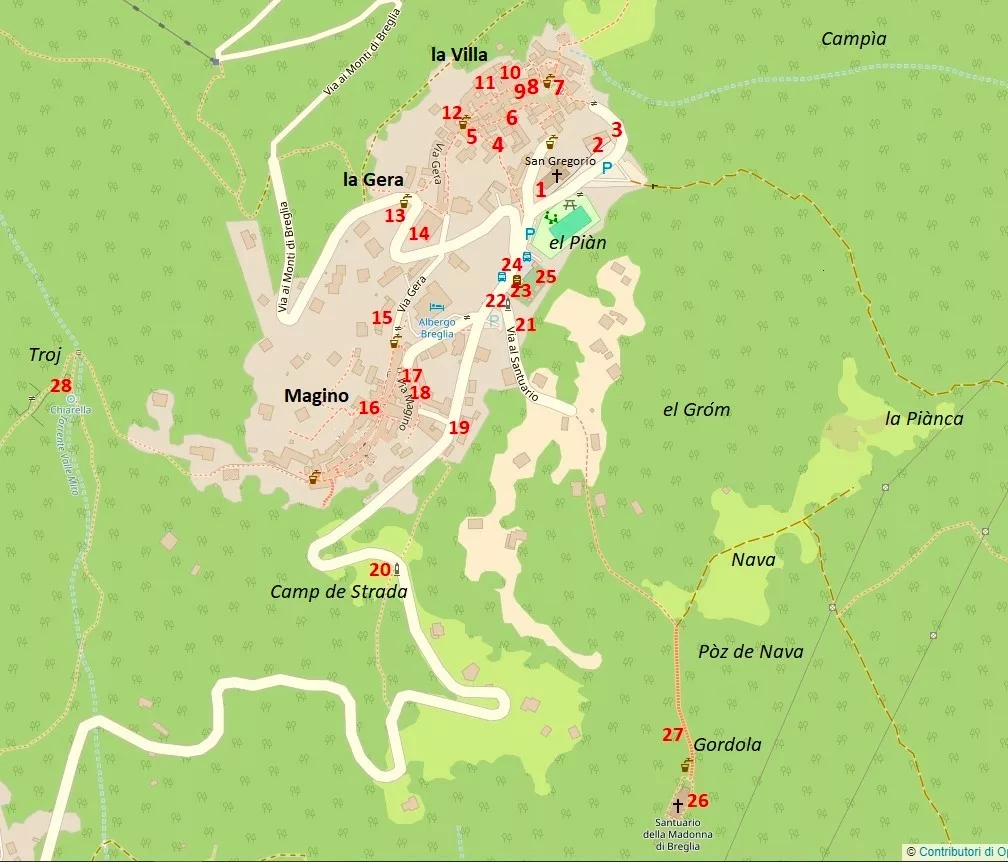
Breglia’s most important sites
1) The new church of San Gregorio (XIX c.)
2) The priest’s house (La cà del prèvet) XVI c.
3) El sagràa, where the old church once stood and then collapsed
4) The Annunciation, 17 th century fresco
5) Molo family house, existing in the 15 th century, and fresco dated 1510 with Madonna, S.
Andrea, S. Antonio
6) El Ferèe: the blacksmith’s workshop
7) Cancanei square and the fountain built in 1862
8) Medieval stately home
9) Renaissance house, former College (1778-1811)
10) The Medieval Tower (XIII-XIV c.)
11) The Convent of the Dominican friars (XV c.)
12) The chapel of Villa and the fountain of Mürett
13) The washhouse at La Gera
14) The Palazzone, house of the poet Giampietro Lucini (1867 – 1914)
15) 17 th century homes
16) Casa Tatti, former medieval hospital
17) Piazèta del tòrch: winepress square
18) “Tantum ergo” inscription
19) Chapel of San Gaetano, called “a la porta” (at the door) because at the entrance of the
village.
20) The chapel of “camp de strada”, Marian shrine
21) The Mysteries of the Rosary (1815), mark the way to the Sanctuary
22) La capèla del piàn (the chapel of the plain), since at least 18 th century
23) Roman Tomb (IV c.)
24) The ancient Via Regina, at the highest point of its route it passed through Breglia
25) Cemetery (1795) and Monument to the Fallen of the 1 st World War
26) Sanctuary Madonna di Breglia, 18 th century
27) The plague column, 17 th century
28) Troj spring, “Chiarella” water
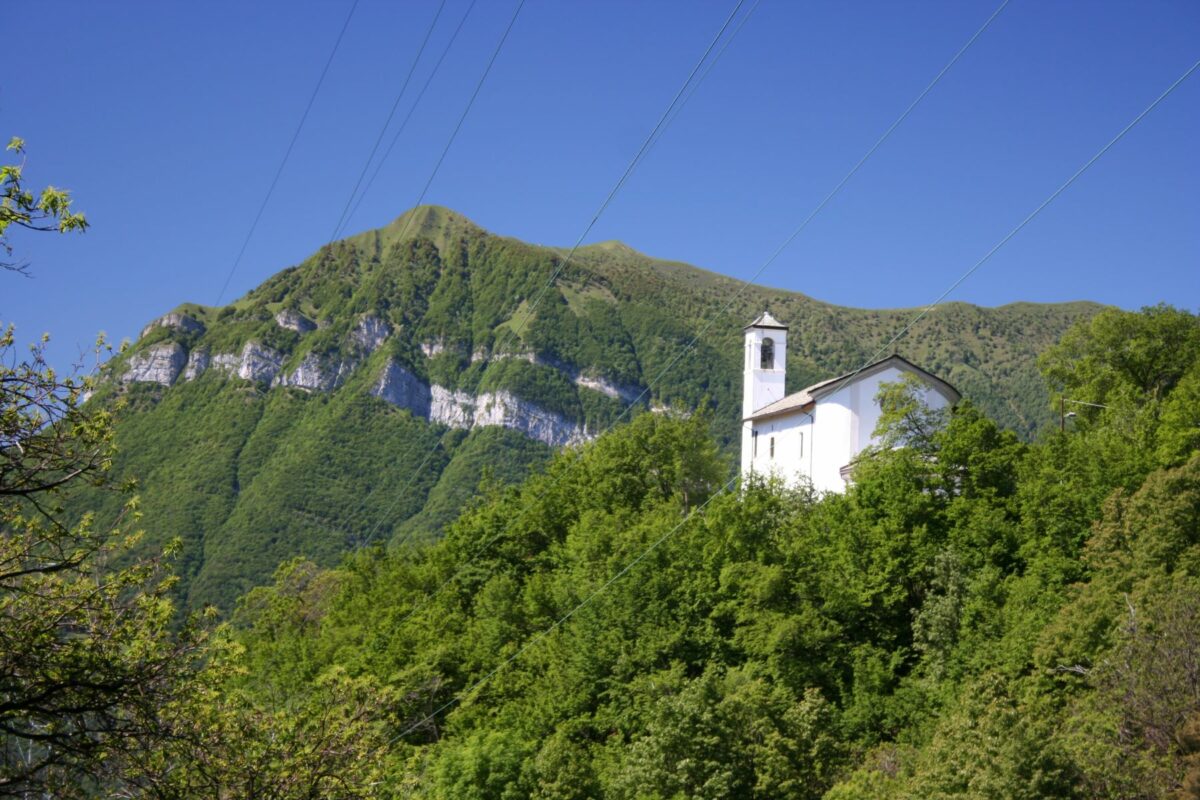
Roman Tomb
In front of the cemetery of Breglia there is a Roman tomb from the 4th century. It was discovered during cemetery expansion works in the 1980s and reassembled just a few meters from its original site. The tomb housed the remains of a man about 1.6 meters tall, along with two stone cups and some bronze objects. The tomb was located along the highest point of the ancient Via Regina. It was customary to locate burials next to roads so that passersby could turn their gaze and thoughts toward the deceased. The Via Regina was a crucial transit route built by the Romans, connecting Como and the Po Valley with the Alpine passes and the countries beyond. Its name comes from “Regia,” an ancient Roman term meaning the main road.
This road stretched along the entire west coast of Lake Como.
The Sanctuary of the Madonna di Breglia
On the summit of Gordola, a rocky spur in a panoramic position, stands the sanctuary dedicated to the Madonna of Breglia. The path leading to the Sancuary starts near the cemetery and leads you in 15 minutes to the church which houses a miraculous alabaster sculpture of the Madonna and Child. It was brought from Genoa to Breglia at the beginning of the 18th century by the Tatti family, who placed it in a niche in their house in Magino.
After a plague it was displayed in the parish church for veneration, but from there it disappeared and was found by a man from Ligomena in a cave in Gordola. According to legend, twice he took it home, but the statue mysteriously returned to the cave. The third time, arriving with the statue under the houses of Magino, he was struck by partial blindness, therefore he understood that
there was a divine will and brought the Madonna back to Gordola where they built a small chapel to welcome her. The chapel was transformed into a church, consecrated in 1781. Inside, the statue of the Madonna is kept in the apse; noteworthy are the seventeenth-century organ on the counter-façade and the fifteenth-century crucifix preserved on the left wall, both recently restored.


